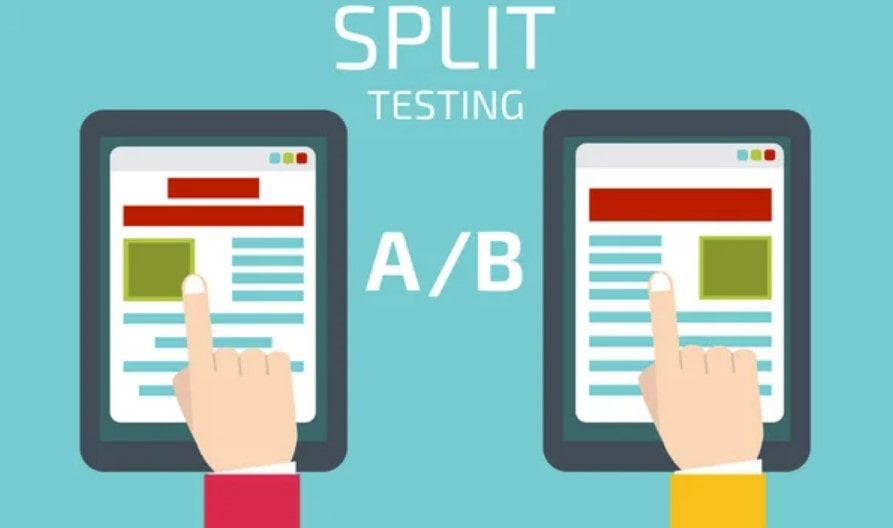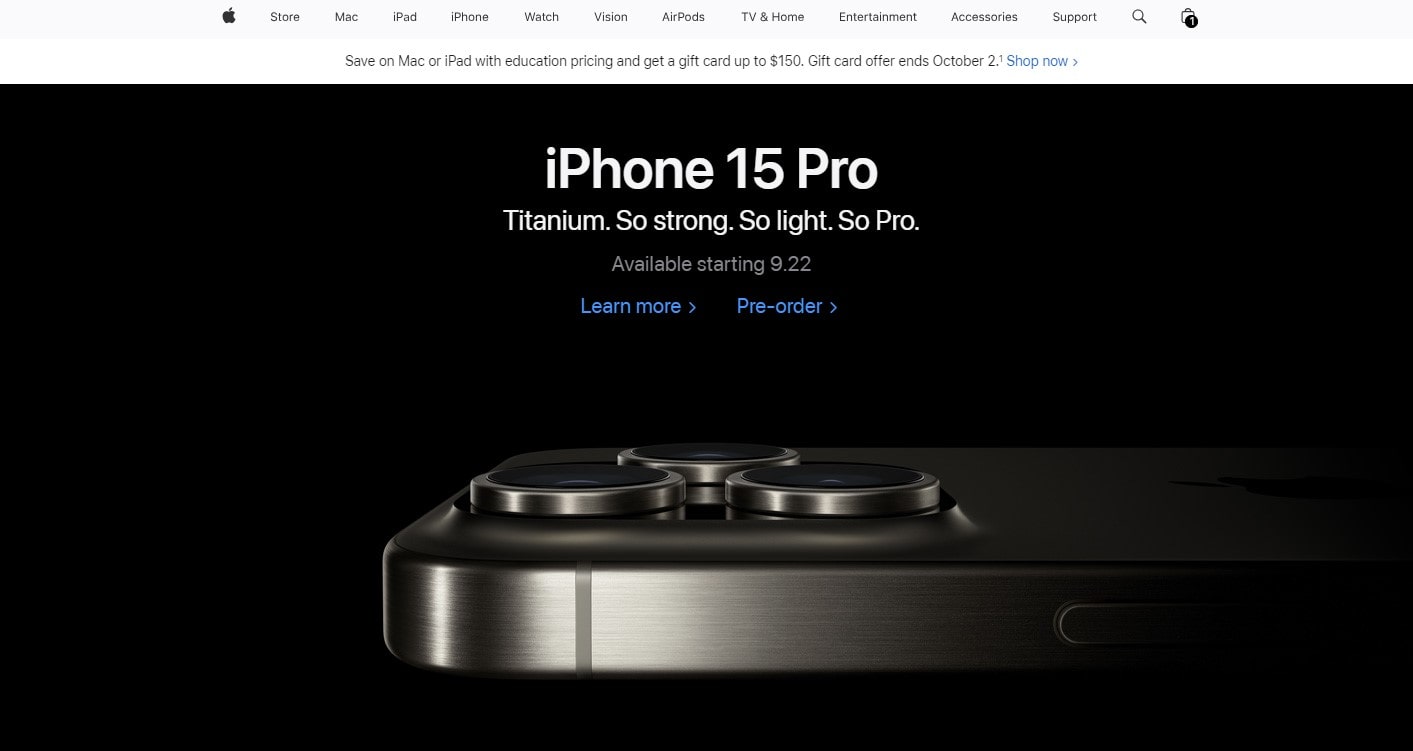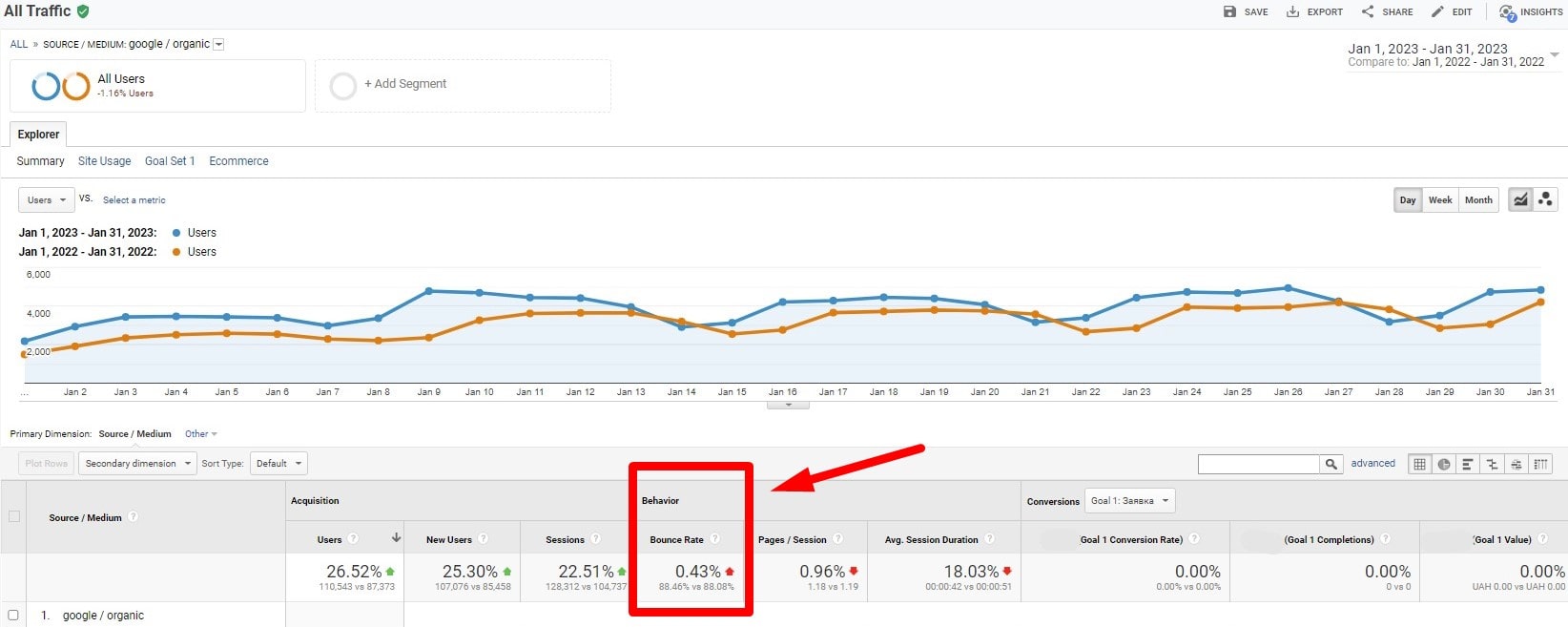In today’s digital marketplace, mastering Conversion Rate Optimization (CRO) is not just a luxury—it’s a necessity. Imagine transforming every click into a customer; that’s the power of an effective CRO. It’s the art of making your website a digital presence and a dynamic engine driving sales and engagement. With Plerdy, a leader in website analytics and optimization, uncovering the potential of Conversion Rate Optimization becomes an exciting journey. From understanding user behavior to implementing changes that resonate with your audience, Plerdy is your partner in turning visits into value. Ready to unlock the secrets of Conversion Rate Optimization and skyrocket your online success? Keep reading because this is just the beginning.

Understanding Conversion Rate Optimization (CRO)
Conversion Rate Optimization (CRO) is a pivotal strategy in today’s digital marketing landscape. It’s not just about increasing traffic but maximizing the effectiveness of that traffic. Increasing the percentage of site visitors who carry out an action you define is the goal of conversion rate optimization (CRO). This could range from purchasing to signing up for a newsletter.
Defining CRO
At its core, Conversion Rate Optimization is about understanding your users’ journey on your site. It involves a deep dive into analytics to see where users drop off and why. This means analyzing every click, scroll, and interaction. Doing so lets you make informed decisions to tweak and test elements like call-to-action buttons, layout, and content. It’s a continuous process of learning and improving, aiming to align your website more closely with user expectations and business goals.
The Role of Conversion Rate Optimization in Digital Marketing
CRO is indispensable in digital marketing because it can turn passive website visitors into active customers. It’s about creating an online environment that facilitates and encourages user actions. Key elements of CRO include A/B testing, user experience (UX) improvements, and persuasive copywriting. Each element plays a crucial role:
- A/B Testing: Comparing two webpage versions to see which performs better.
- User Experience Enhancements: Ensuring the website is intuitive and enjoyable to navigate.
- Effective Copywriting: Crafting compelling messages that resonate with the audience.
Understanding Conversion Rate Optimization is essential for any business looking to thrive online. It’s not just about the technical aspects but also about creating a user-centered website that effectively guides visitors toward your business goals. Investing in conversion rate optimization (CRO) does more than simply make your website better; it improves the user experience as a whole, which in turn increases engagement and, eventually, conversions.
Why CRO is Crucial for Online Success
![]()
In digital marketing, Conversion Rate Optimization (CRO) is not just beneficial; it’s essential for online success. It’s critical in bridging the gap between website traffic and actual sales or conversions.
Impact on Sales and Revenue
The primary goal of any business is to generate revenue, and here, Conversion Rate Optimization plays a crucial role. By optimizing your website for conversions, you’re directly influencing your bottom line. This optimization involves making your website more appealing and user-friendly, encouraging visitors to take the desired action, whether a purchase, a sign-up, or another form of engagement. Key factors in this aspect include:
- Streamlined navigation
- Clear and compelling call-to-actions
- Trust-building elements like testimonials and guarantees
These components work together to attract users and convert their interest into tangible sales, significantly impacting your revenue.
Enhancing Lead Generation
Beyond sales, CRO is instrumental in lead generation. It optimizes your site’s user journey, making visitors more likely to leave their contact information, subscribe to newsletters, or download resources. This process involves:
- Creating engaging content
- Offering valuable resources
- Optimizing forms for ease of completion
In summary, CRO is vital for online success because it turns your website into a powerful tool for driving sales and generating leads. By focusing on the user experience and journey, Conversion Rate Optimization ensures that your website is not just visited but used as a stepping stone towards the growth and prosperity of your business. The right CRO strategy can transform your website from a static digital presence into a dynamic revenue-generating asset.
Core Components of Effective CRO Strategies

Effective Conversion Rate Optimization (CRO) strategies are the cornerstone of turning site visits into meaningful interactions and conversions. Understanding and implementing the core components of these strategies is crucial for any business seeking to improve its online performance.
Website Analysis Techniques
The foundation of any CRO strategy is a thorough website analysis. This involves examining various aspects of your site to identify areas for improvement. Key areas to focus on include:
- User navigation patterns
- Page load times
- Content relevance and clarity
- Mobile responsiveness Analyzing these elements helps understand user behavior, pinpoint obstacles, and identify opportunities for enhancement.
A/B Testing and Its Importance
You can’t have Conversion Rate Optimization without A/B testing, which allows you to make decisions based on data. This process involves creating two webpage versions (A and B) and comparing their performance. Factors to test include:
- Headlines
- Call-to-action buttons
- Images and layout
- Product descriptions A/B testing helps determine what resonates best with your audience, thus guiding you in making effective changes to your website.
Optimizing User Experience

Optimizing the user experience (UX) is integral to CRO. Users are more likely to interact with your content and remain on your site for longer if the user experience is good. Elements to optimize for a better UX include:
- Simplified navigation
- Quick and easy checkout processes
- Engaging and relevant content
- Interactive elements like chatbots or quizzes
An effective Conversion Rate Optimization strategy is built on comprehensive website analysis, rigorous A/B testing, and a relentless focus on user experience. Your website’s conversion rate will be much higher if you give these essential features top priority. Remember, CRO is not a one-time fix but an ongoing process of refinement and improvement to keep your website aligned with user needs and business objectives.
Analyzing and Interpreting CRO Metrics
Analyzing and interpreting CRO metrics is pivotal in understanding the effectiveness of your website and its conversion strategies. You may make educated, consequential decisions by analyzing these data, which provide light on user behavior and preferences.
Understanding Bounce Rates

The bounce rate is a critical metric in Conversion Rate Optimization, indicating the percentage of visitors who leave your site after viewing only one page. A high bounce rate might signal issues like slow page load times, poor content relevance, or a confusing user interface. Analyzing this metric helps you identify and rectify the factors causing visitors to leave prematurely, enhancing user engagement and the likelihood of conversion.
Evaluating Conversion Rates
The conversion rate, or the proportion of site visitors who go on to do an intended activity, is crucial to conversion rate optimization (CRO). It’s essential to track this metric to assess the effectiveness of changes made on your site. Factors affecting conversion rates include:
- Website design and navigation
- Clarity and persuasiveness of calls to action
- Relevance and quality of content Improving these aspects can lead to a higher conversion rate, indicating a more effective website in fulfilling business goals.
The Significance of Click-Through Rates
Click-through rates (CTR) measure the effectiveness of your links and calls to action, reflecting how compelling your content and offers are to visitors. A low CTR could indicate that your messaging isn’t resonating with your audience or that your offers aren’t appealing. By analyzing CTR, you can refine your content strategy and enhance the attractiveness of your offers.
Understanding and acting upon these CRO metrics is essential for optimizing your website’s performance. Regularly analyzing these metrics provides a roadmap for continuous improvement, ensuring your website remains an effective tool for engaging visitors and driving conversions. Remember, in the digital world, your website is your most potent asset; harnessing its full potential through meticulous Conversion Rate Optimization metric analysis is key to online success.
Implementing Conversion Rate Optimization: Best Practices and Strategies
Implementing CRO effectively requires a strategic approach, blending best practices with innovative strategies to enhance website performance and user engagement. You can transform your site into a conversion powerhouse by focusing on key areas.
Landing Page Optimization

The cornerstone of Conversion Rate Optimization is optimizing landing pages. These pages should be designed with a clear focus on encouraging user action. Essential elements include:
- Compelling Headlines: Captivate visitors instantly with relevant, attention-grabbing headlines.
- Clear Calls-to-Action (CTAs): Use direct, action-oriented language to make your CTAs stand out visually.
- Streamlined Design: Ensure your page is clutter-free, with a layout that guides visitors towards the conversion goal.
- Trust Signals: Include testimonials, reviews, or security badges to build trust and credibility. Effective landing pages are not just about aesthetics; they’re about creating a user-centric experience that guides visitors toward making decisions.
Effective Call-to-Actions
In order to get people to do what you want them to, your calls to action (CTAs) are crucial. For the fullest possible effect:
- Positioning: Place CTAs strategically where they’re most likely to catch attention.
- Personalization: Tailor CTAs to match user interests and behavior.
- Testing: Test different CTA designs, placements, and messages regularly to find what works best.
In summary, implementing CRO is about crafting a user journey that naturally leads to conversions. Every element must be optimized for engagement and persuasion from the moment visitors land on your site to the point they take action. Regular testing, analysis, and refinement are key to staying ahead in the dynamic digital landscape. Remember, a successful Conversion Rate Optimization is not set in stone; it evolves with your audience’s needs and preferences.
Case Studies: Successful CRO in Action
Exploring case studies of successful conversion rate optimization (CRO) offers invaluable insights into The practical application and impact of conversion rate optimization strategies. These real-world examples demonstrate how effective CRO can significantly improve website performance and business outcomes.
Case Study 1
One notable example involves a leading e-commerce website. Initially struggling with a low conversion rate, the company implemented a comprehensive Conversion Rate Optimization strategy. Key actions included:
- Redesigning the website for better user experience.
- Optimizing product pages with clear, compelling descriptions and high-quality images.
- Introducing personalized recommendations based on user behavior.
- Streamlining the purchasing procedure to decrease shopping cart abandonment.
The results were remarkable, with a 30% increase in conversion rates within six months. This success was attributed to a more intuitive website design and a streamlined buying process that resonated with customers.
Case Study 2
Another example is a SaaS provider that revamped its lead generation strategy. They focused on:
- Creating targeted landing pages for different customer segments.
- Using A/B testing to refine CTA placement and messaging.
- Implementing chatbots for instant customer engagement.
- Enhancing content quality to better address customer pain points. This approach led to a 40% rise in lead generation, showcasing the power of tailored content and user-focused design in driving conversions.
These case studies underline the transformative potential of CRO. Businesses can enhance user engagement and conversion rates by thoughtfully analyzing and optimizing various website elements. These real-life success stories testify to the effectiveness of Conversion Rate Optimization, providing inspiration and practical guidance for businesses looking to boost their online performance. Remember, the key to CRO success lies in ongoing testing, learning, and adapting to meet the evolving needs of your audience.
Future of CRO: Trends and Predictions

As we look toward the future of Conversion Rate Optimization (CRO), emerging trends and predictions indicate an increasingly sophisticated, data-driven, and user-centric landscape. Staying ahead in Conversion Rate Optimization will require adapting to these evolving dynamics.
Emerging Technologies in CRO
Technological advancements are shaping the future of Conversion Rate Optimization. Artificial Intelligence (AI) and Machine Learning (ML) are at the forefront, offering deeper insights into user behavior and preferences. Predictive analytics will enable personalized user experiences, tailoring website content to individual needs in real-time. Moreover, advancements in voice search optimization and augmented reality (AR) will open new frontiers in how users interact with websites, making it crucial for CRO strategies to evolve alongside these technologies.
The Role of AI and Machine Learning
AI and ML are set to revolutionize Conversion Rate Optimization by automating data analysis, enabling real-time decision-making, and providing more accurate predictions on user behavior. This will lead to more efficient A/B testing, improved user experience design, and dynamic content personalization. The ability of AI to analyze large data sets will uncover hidden patterns in user behavior, leading to more effective and targeted CRO strategies.
The future of Conversion Rate Optimization promises exciting opportunities for businesses willing to embrace new technologies and approaches. Integrating AI, ML, and other emerging technologies will enhance the efficiency of CRO efforts and provide more personalized and engaging user experiences. The success of Conversion Rate Optimization in the future will depend on its ability to remain flexible, knowledgeable, and adaptable in the face of a constantly shifting digital environment. To keep up with customer expectations and technological changes, firms must continuously evolve their CRO strategy.
Harnessing the Power of Conversion Rate Optimization
The goal of Conversion Rate Optimization (CRO) is to enhance the website’s usability and, by extension, the probability of a conversion. It is more than simply making little adjustments to a website. Central to conversion rate optimization (CRO) is the idea that it can turn inactive site visitors into engaged members of the community and ultimately, paying customers.
The key to harnessing CRO is understanding its components. Data-driven analysis forms the foundation, enabling informed decisions about website changes. User experience (UX) optimization is crucial, as a positive UX increases the likelihood of conversion. Regular A/B testing is also vital, providing insights into what resonates with your audience and what doesn’t.
Conversion Rate Optimization is not a one-off task but an ongoing process. It involves:
- Continuously analyzing user behavior and site performance.
- Implementing changes based on data and insights.
- Testing and retesting to refine the approach.
As the digital landscape evolves, so too does the importance of CRO. It’s about staying ahead of user expectations and technological advancements. By focusing on user-centric design, mobile optimization, and personalization, businesses can effectively leverage Conversion Rate Optimization.
The power of CRO is in its capacity to make the web a more interesting, user-friendly, and conversion-friendly place. It’s a commitment to ongoing improvement and adaptation, ensuring every visitor interaction is an opportunity to impress, engage, and convert. The end goal is to boost traffic and create a reliable and entertaining website that attracts and retains customers.
Conclusion
In conclusion, mastering Conversion Rate Optimization (CRO) is an ongoing journey pivotal for any business aiming to thrive in the digital landscape. It’s about understanding your audience, refining the user experience, and constantly adapting to changing trends and behaviors. Remember, Conversion Rate Optimization’s ultimate goal is to increase conversions and build a website that genuinely resonates with your audience.
Curious to learn more and take your website to the next level? Explore other insightful articles here on Plerdy’s blog. Each piece is crafted to give you deeper insights into enhancing your online presence. And if you’re ready to dive deeper into optimizing your website’s performance, why not explore Plerdy’s comprehensive tools and services? They are designed to empower your Conversion Rate Optimization journey, turning insights into action. Discover the Plerdy difference today, transforming your website into a conversion powerhouse.
